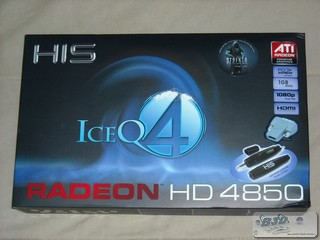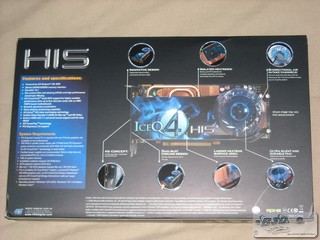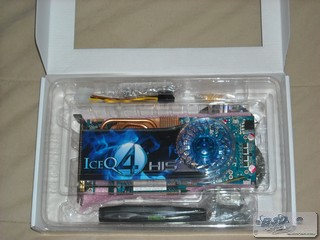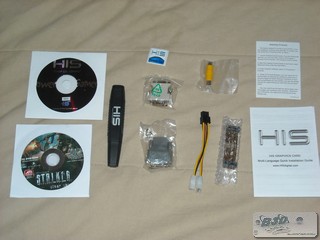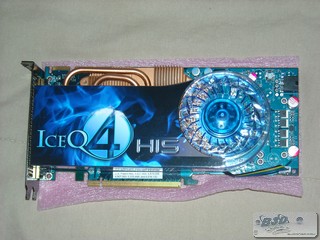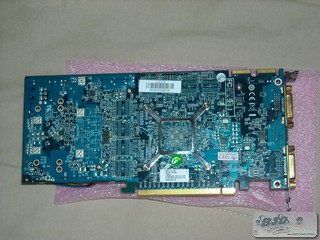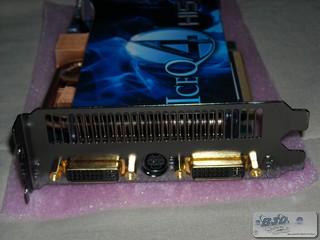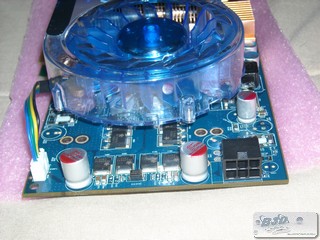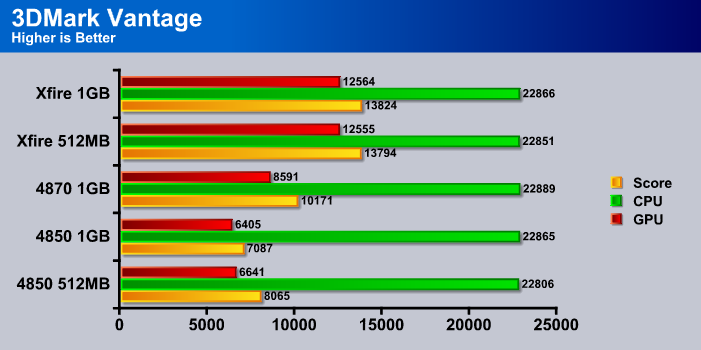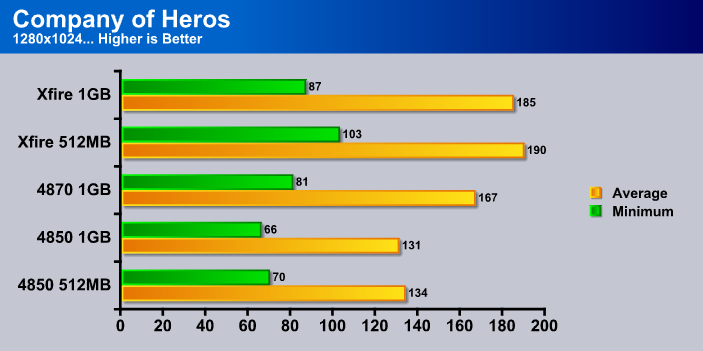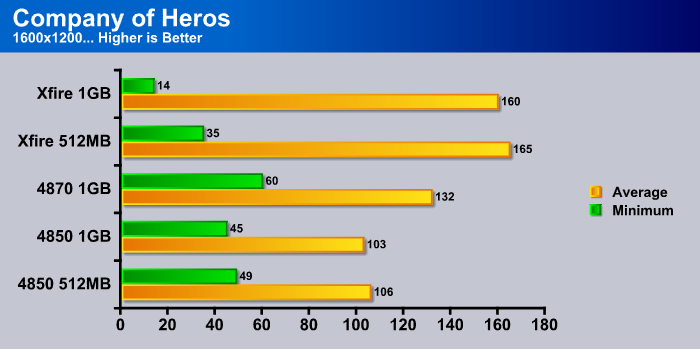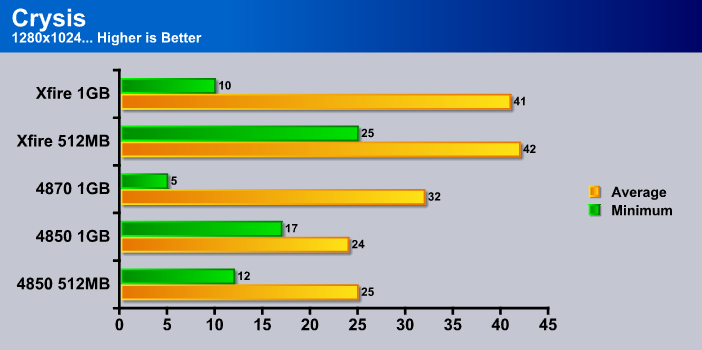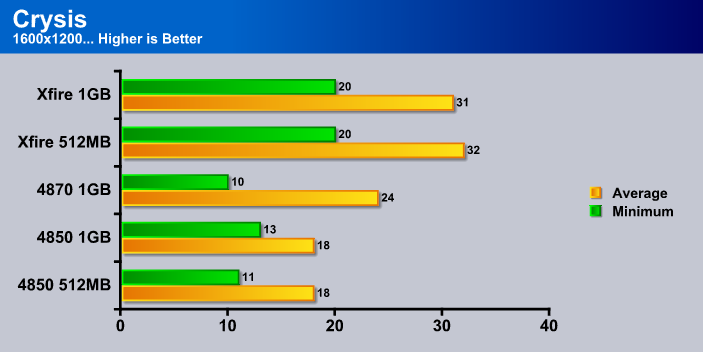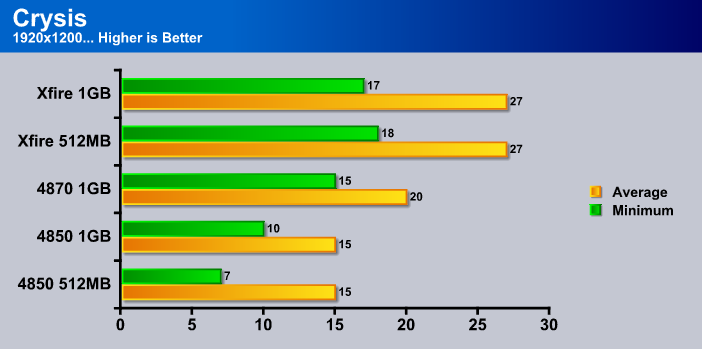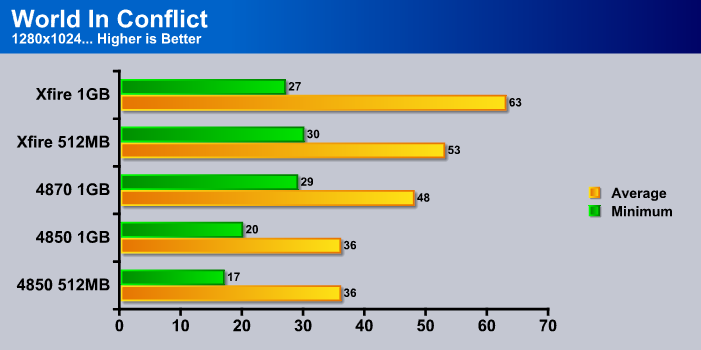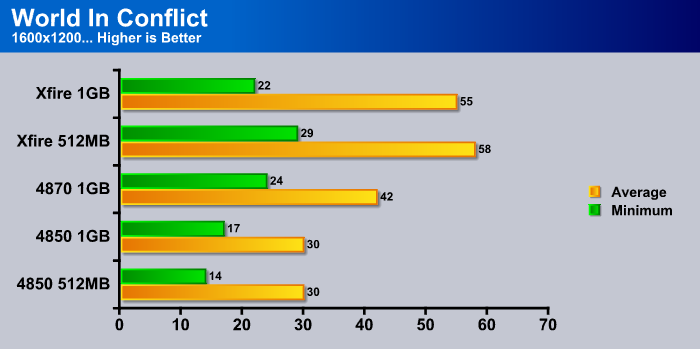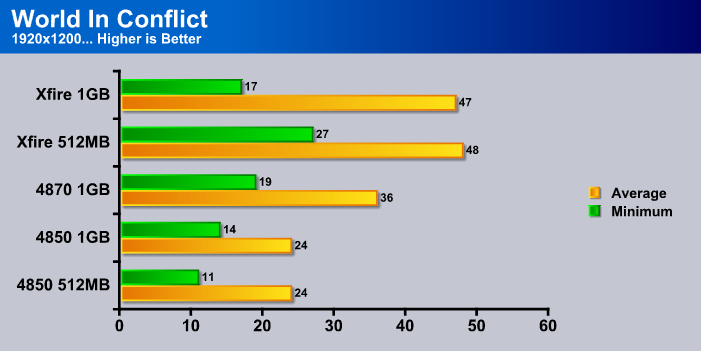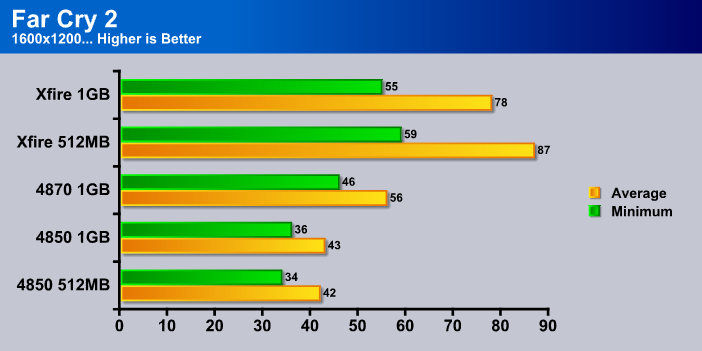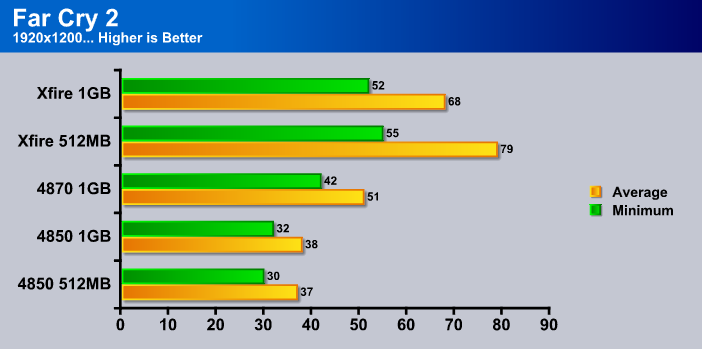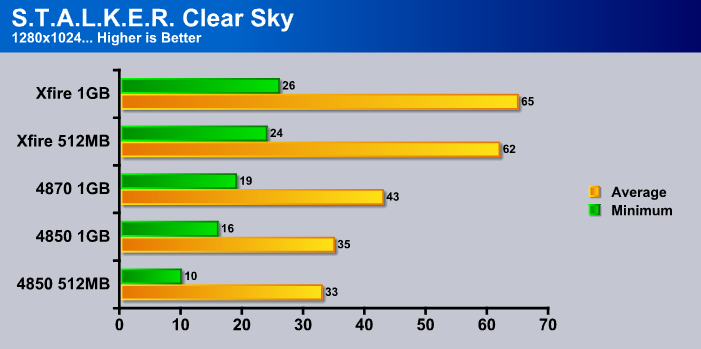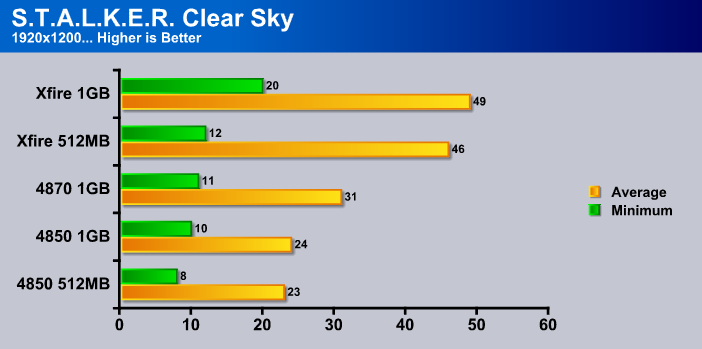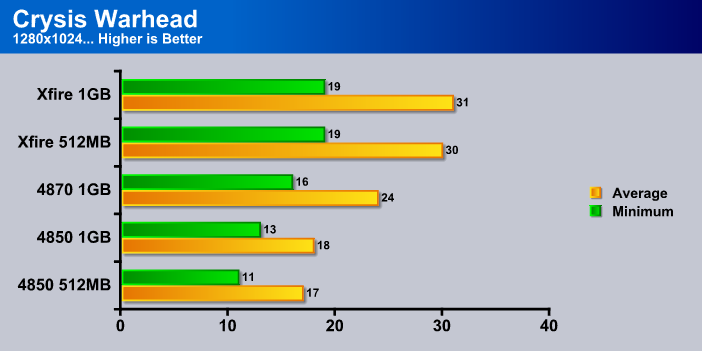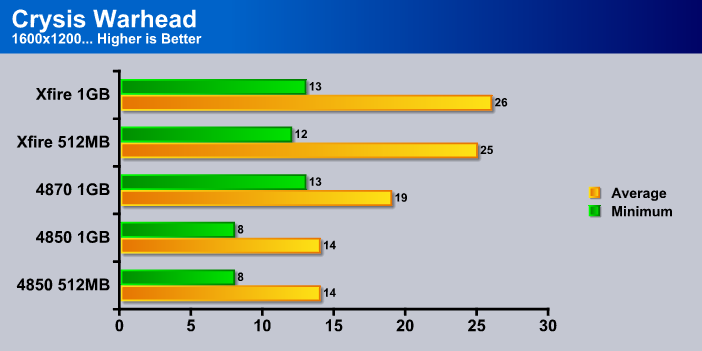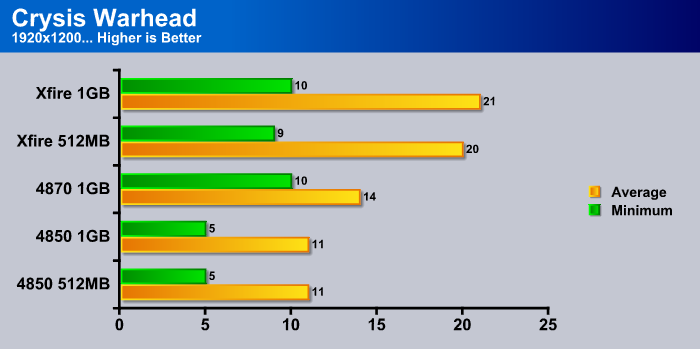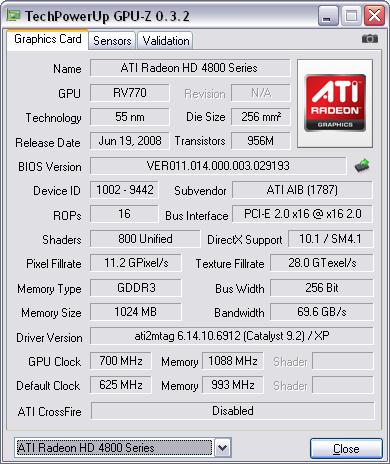Once again the installed RAM on graphics cards has increased. Will this increase come with higher frames or broken dreams? HIS steps up to the plate with their offering on a HD 4850 1GB.
Introduction
We have come a long way from the major change of high end graphics RAM size that took place near the end of the Nvidia 7 and ATI X1900 series like spans. This change is happening again, only this time it’s not 256 MB to 512 MB, it’s 512 MB to 1 GB. One gigabyte cards are quickly becoming the norm for higher end cards. Even some of the lower end cards are getting the 1 GB treatment. It is one thing for a company to slap an extra 512 MB of RAM on a card and call it a new card, it’s another for the card to actually perform significantly better than the 512 MB version. While the higher RAM size certainly helps in higher resolutions, by how much does it help?
That is the question posed today with the HIS HD 4850 IceQ4, the latest in HIS’s long standing IceQ series. The IceQ series has long been considered one of the best cooled cards that comes from the factory. Generally, when you think of exceptional cooling, you think of major overclocking. Though the HD 4850 has not had much success hitting 700 MHz core, maybe the IceQ 4 will change that. With the look of this cooler, I would not doubt it would at least run cool at the highest overclock. There’s only one way to find out!

About HIS
HIS has been around since 1987 and has always strived to produce the highest quality graphic cards in the industry. Whether they have succeeded or not are of course up to you buyers but we have reviewed a lot of their products the last few years and almost always been impressed with the quality of their products.
Their headquarters is in Hong Kong but they sell all over the world. They are one of AMD’s Authorized 1st Tier AIB partner.
One of their first big successes was with the Excalibur line of video cards back in 2002. These days they are quite famous for their IceQ, IceQ II and now IceQ 3 series of cards which uses some very nice and quiet coolers on the cards.
Features
Product Advantage
HIS IceQ 4 is the 4th generation of IceQ cooling technology, which is endorsed by the media worldwide. Thanks to the newly designed double-slot fans and dual heatpipes, HIS IceQ 4 effectively dissipated the heat from the GPU, thus enabling it for high levels of performance. It cools down the GPU temperature dramatically when compare with the reference cooler, allowing you to maximize your overclocking potential. What’s more? The ultra silent and durable fan delivers ultra-quiet and stable gaming environment for enthusiast gamer.
 Heat transfers rapidly out of GPU and reduces temperature faster. |
 Cool down the droom to overclock and run chip faster; provides more headroom to overclock and run faster. |
 Operates with lower noise level than original cooler. |
- Efficient transfer of heat outside of computer case
Cool air is drawn from both sides of the fan and hot air is forced out of the computer case. This ensures effective cooling when there is another card in front blocking the fan inlet. - Crossfire Advantage
For CrossFire setup, the fan ensures effective cooling with another card blocking at front. - Silent and durable fan
Significantly reduce noise level and extend service life - Dual Heatpipe
Heat is rapidly transferred from the core area reducing the GPU temperature. - UV Sensitive
IceQ4 will glow under UV light.
Faster – Heat transfers rapidly out of GPU and reduces temperature faster

In order to improve the power capacity, we have changed from simple extrusion heatsink to stacked fins with bigger surface area to improve the heat transfer efficiency significantly. Thicker spreader and heatpipes are also used to allow a more even heat distribution among the fins. Spreader is the metal base of the heatsink.
Cooler – Efficient transfer of heat outside of computer case:

Cool air is drawn from both sides of the fan and hot air is forced out of the computer case. This ensures effective cooling when there is another card in front blocking the fan inlet, such as in CrossFire setup. Memory and GPU heatsinks are completely separated, preventing any heat transfer from GPU to memory. Memory heatsink is actively cooled by air stream from main cooler.
Cooling Performance – IceQ 4 vs Single Slot Cooler
By expelling the hot air, IceQ 4 removes all the heat generated by the GPU out of the computer chassis, prevents the hot air from accumulating inside and enhancing the overall stability. The more crowded the chassis, the greater will be the impact. Following charts illustrate the impact on cooler performance:
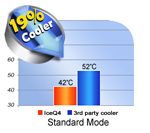

Cool air is drawn from both sides of the fan and hot air is forced out of the computer case. This ensures effective cooling when there is another card in front blocking the fan inlet, such as in CrossFire setup.
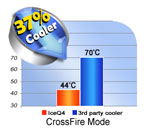
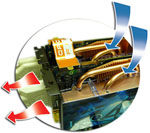
The demonstration shows that the IceQ 4 does outperform the 3rd party cooler in closed environment. The improvement in cooling effect is even more noticeable when a board is placed in front of the graphics card, such as in Crossfire setup.
Specifications
|
Specifications
|
|||
| GPU |
HD 4850 512MB
|
HD 4850 1GB
|
HD 4870 1GB
|
| GPU Frequency |
625 MHz
|
625 MHz
|
750 Mhz
|
| Memory Frequency |
993 MHz
|
993 Mhz
|
900 Mhz
|
| Memory Bus Width |
256-bit
|
256-bit
|
256-bit
|
| Memory Type |
GDDR3
|
GDDR3
|
GDDR5
|
| # of Stream Processors |
800
|
800
|
800
|
| Texture Units |
40
|
40
|
40
|
| ROPS |
16
|
16
|
8
|
| Bandwidth (GB/sec) |
63.6
|
63.6
|
115.2
|
| Process |
55nm
|
55nm
|
55nm
|
Pictures & Impressions
GPU box
The outside of the box has a nice graphic. The 4 reminds me a bit of the movie Fantastic 4. Also, on the front is a little sticker that says this card comes with a free game! It is always a nice thing for a graphics card manufacturer to include a game so you can test your new toy without having to buy a game. There is also a sticker that shows the included multi-purpose screwdriver, but more on that later. When we move to the back we see the basic information graphics card makers usually put on their boxes. There is a brief rundown of all the features along with the specifications. This is not a factory overclocked card, so it has the standard clocks.
Inside box
To get the whole assembly out, you have to pull a smaller white box out of the larger outside box. The white box fits perfectly inside the larger box, so you don’t have to worry about it sliding around inside. Everything is packed in the box tightly, but not so tight that things are prone to getting broken. Right in the middle is the GPU. HIS did a great job keeping it protected. There is an entire plastic casing around the card to insure it doesn’t accidentally become zapped. HIS has also included some foam on the bottom of the card to further insure that no harm comes to the card before it gets into your grubby hands.
Accessories
Once I pulled all the accessories out of the box I was surprised at how much was there. HIS has included a Molex to 6-pin PCIE connector for anyone without a newer power supply. There are also the basics such as a Crossfire cable, and a DVI to VGA adapter. One thing in particular caught my eye, the multi-purpose screwdriver. After some inspection I found this to be a very handy tool that comes with removable bits for both Phillips and straight head screws. It also has a level, along with a flashlight. I plan to use this tool for years to come due to its handiness. HIS certainly went above and beyond on the packaging for this card. I would go as far as saying it is better than some better performing cards.
Top of card
Now its time for the star of the show, the HD 4850. The graphic on this card matches the front of the box perfectly. This leads to the fan, which is supposedly almost silent. It certainly looks like a very high quality fan to me. A nice feature that you would never notice, unless you looked on the box, is the separation of the heat sinks. This makes it impossible for the RAM to transfer its heat the GPU, and thus, in theory, lower the GPU’s temperature. This seems more like a gimmick to me. I cant see the RAM making a big difference in GPU temperature. Nonetheless, it’s a nice feature to at least feel better about.
Back of card
The back of the card is pretty plain. I did like that HIS included a full back plate. My Sapphire 4850 does not have this, though the cooler is much lighter. This extra support is most likely due to the weight of the cooler. The blue PCB is pretty common for the HD 4850, so no surprise there. Also standard with all other HD 4850’s are the dual Crossfire connectors. These allow you to run dual, triple, or quad Crossfire. To do more than dual Crossfire you simply alternate connectors until you have included all cards in the loop.
Front of card
The front of the card is different from just about every other HD 4850. This one happens to be a dual slot. The second slot exhausts hot air from your card. This is very nice in a case without a lot of ventilation and, overall, good in any case due to the heat from the card exiting the case instead of entering your CPU cooler. As you look closer at the DVI ports you will see that they are gold plated. This is a nice addition, but really doesn’t make a real world difference. It at least makes the card look cooler.
Back of card
The first thing I noticed when I looked at the back of the card, was that there was no heatsink on the MOSFETs. In the picture on the box they have one, but not on my card. I later made sure they ran cool, and I can verify that they where cool. This leads me to believe the heat sink is not needed, but I would feel safer with one. This card also uses one 6-pin PCIE power connector like other HD 4850’s.
Testing & Methodology
To test the HD 4850, I used Windows Vista Ultimate 64-bit. I went through each test five times to ensure that I had very accurate data. Doing the test multiple times ensures that an out layer is not in the data, thus skewing the final results. All of the graphics cards were tested on the same machine to make sure that there are no added benefits to one card. I have included a table with my full system specs.
| Test Rig | |
| Case Type | Tagan El Diablo Advance |
| CPU | Intel I7 920 @ 3.7 |
| Motherboard | Intel SmackOver X58 |
| Ram | (2×3) Mushkin HP3-12800 @ 1480, 9-9-9-24 |
| CPU Cooler | Cooler Master V10 |
| Hard Drives | WD SE16 640 GB |
| Optical | Lite-On DVD R/W |
| GPU |
Sapphire HD 4870 1GB |
| Case Fans |
Two Top 180mm Exhaust |
| Testing PSU |
Corsair HX1000W |
In 3DMark 06, the default settings where used on a resolution of 1280×1024. For 3DMark Vantage I used the Performance preset. For Company of Heroes I used the maximum settings, including the Model Detail slider all the way to the right. For Crysis, I used the highest settings. I used the Ultra Detail setting in World in Conflict, along with 4xAA and 4XAF. I used the highest settings in Far Cry 2, along with the DX10 renderer. In Clear Sky I used the maximum settings and used the automatic tester to ensure that all the test runs where the same.
For Crossfire, the HD 4850 was tested with another HD 4850. I then tested the HD 4870 with the 1 GB 4850. According to ATI, the faster card, in this case the HD 4870, will slow down to the speed of the slower card. Thus, the results obtained should be the same as if you ran two HD 4850’s in Crossfire.
| Synthetic Benchmarks & Games | |
| 3DMark 06 | |
| 3DMark Vantage | |
| Company of Heroes | |
| Crysis | |
| World in Conflict | |
| FarCry 2 | |
| S.T.A.L.K.E.R. Clear Sky | |
3DMark 06

3DMark06 developed by Futuremark, is a synthetic benchmark used for universal testing of all graphics solutions. 3DMark06 features HDR rendering, complex HDR post processing, dynamic soft shadows for all objects, water shader with HDR refraction, HDR reflection, depth fog and Gerstner wave functions, realistic sky model with cloud blending, and approximately 5.4 million triangles and 8.8 million vertices; to name just a few. The measurement unit “3DMark” is intended to give a normalized mean for comparing different GPU/VPUs. It has been accepted as both a standard and a mandatory benchmark throughout the gaming world for measuring performance.
I was quite surprised at the results here. The single 4850 1GB was beaten by a little bit from the 512MB version. On the other side, the 1GB Crossfire beat out the 512MB Crossfire by a small margin. The extra RAM of the cards does not seem to make much of a difference in 3DMark06.
3DMark Vantage

For complete information on 3DMark Vantage Please follow this Link: www.futuremark.com/benchmarks/3dmarkvantage/features/
The newest video benchmark from the gang at Futuremark. This utility is still a synthetic benchmark, but one that more closely reflects real world gaming performance. While it is not a perfect replacement for actual game benchmarks, it has its uses. We tested our cards at the ‘Performance’ setting.
Currently, there is a lot of controversy surrounding NVIDIA’s use of a PhysX driver for its 9800 GTX and GTX 200 series cards, thereby putting the ATI brand at a disadvantage. Whereby installing the PyhsX driver, 3DMark Vantage uses the GPU to perform PhysX calculations during a CPU test, and this is where things get a bit gray. If you look at the Driver Approval Policy for 3DMark Vantage it states; “Based on the specification and design of the CPU tests, GPU make, type or driver version may not have a significant effect on the results of either of the CPU tests as indicated in Section 7.3 of the 3DMark Vantage specification and white paper.” Did NVIDIA cheat by having the GPU handle the PhysX calculations or are they perfectly within their right since they own Ageia and all their IP? I think this point will quickly become moot once Futuremark releases an update to the test.
The 3DMark Vantage result was very similar to 3DMark06 result wise. The 1GB 4850 lost to the 512MB version by a small margin. The 1GB Crossfire managed to keep the 512MB Crossfire at bay by a few points. So far, in testing, the 4870 has fallen behind Crossfire 4850’s, a trend that I predict will continue.
Company of Heroes

Company of Heroes(COH) is a Real Time Strategy(RTS) game for the PC, announced on April, 2005. It is developed by the Canadian based company Relic Entertainment and published by THQ. COH is an excellent game that is incredibly demanding on system resources thus making it an excellent benchmark. Like F.E.A.R., the game contains an integrated performance test that can be run to determine your system’s performance based on the graphical options you have chosen. Letting the games benchmark handle the chore takes the human factor out of the equation and ensures that each run of the test is exactly the same producing more reliable results.
Right out of the gate the HD 4850 512MB gains a slight lead over the 1GB model. Crossfire on the 1GB cards also suffers. RAM really makes more of a difference in higher resolutions, so maybe the 1GB cards can pick it up some.
Even with a higher resolution the 1GB cards fail to best the 512MB. In a surprise victory, the HD 4870 had the highest minimum frame rate.
Once again the HD 4870 preserves its minimum frame rate lead. The 512MB Crossfire continues to lead the Company of Heroes test. On all of the cards, the average frame rate exceeded 60 FPS, so you wouldn’t notice a difference between any of the cards.
Crysis

Crysis is the most highly anticipated game to hit the market in the last several years. Crysis is based on the CryENGINE™ 2 developed by Crytek. The CryENGINE™ 2 offers real time editing, bump mapping, dynamic lights, network system, integrated physics system, shaders, shadows, and a dynamic music system, just to name a few of the state-of-the-art features that are incorporated into Crysis. As one might expect with this number of features, the game is extremely demanding of system resources, especially the GPU. We expect Crysis to be a primary gaming benchmark for many years to come.
While the 512MB had a slightly higher average frame than the 1GB, the 1GB managed a higher minimum frame rate. The 1GB Crossfire did not have as much luck as the 1GB single card.
When the resolution is increased, the cards stay in their relative areas. So far. the extra RAM on the HD 4850 has made a minimal difference in Crysis, or in any game, for that matter.
The 1GB 4850 neither gains or loses much ground against the 512MB version. The 1GB Crossfire manages to gain a tiny bit of ground against the 512MB Crossfire, thus making them about exactly the same score.
World in Conflict

World in Conflict is a real-time tactical video game developed by the Swedish video game company Massive Entertainment, and published by Sierra Entertainment for Windows PC. The game was released in September of 2007. The game is set in 1989 during the social, political, and economic collapse of the Soviet Union. However, the title postulates an alternate history scenario where the Soviet Union pursued a course of war to remain in power. World in Conflict has superb graphics, is extremely GPU intensive, and has built-in benchmarks. Sounds like benchmark material to us!
Finally, some results where the extra RAM makes a difference! While the 1GB Crossfire had a lower minimum frame rate, its overall frame rate was much better than the 512MB Crossfire.
Then, in a weird twist of fate the 512MB, Crossfire cards are back on top. The 1GB single card retains its lead over the 512MB version. I am really puzzled at these results. Theoretically, the opposite should be happening with Crossfire.
The 1GB Crossfire manages to gain back a lot of lost ground, but comes up just short once again. The single 1GB card stays just a step ahead of the 512MB card.
Far Cry 2

Far Cry 2, released in October 2008 by Ubisoft, was one of the most anticipated titles of the year. It’s an engaging state-of-the-art First Person Shooter set in an un-named African country. Caught between two rival factions, you’re sent to take out “The Jackal”. Far Cry2 ships with a full featured benchmark utility and it is one of the most well designed, well thought out game benchmarks we’ve ever seen. One big difference between this benchmark and others is that it leaves the game’s AI (Artificial Intelligence ) running while the benchmark is being performed.
As with World in Conflict, the 1GB Crossfire lags slightly behind 512MB Crossfire. The single 1GB card manages to increase its lead in the Far Cry 2 tests.
With an increase in the resolution, the 512MB Crossfire still manages to keep the lead. As with World in Conflict, the 1GB 4850 still chugs slightly ahead of the 512MB version.
The results are pretty much the same as the last resolution, but the frames are a bit lower. I was expecting a lot more out of the 1GB Crossfire, but it seems that the extra frame buffer does not make much of a difference.
S.T.A.L.K.E.R. Clear Sky

S.T.A.L.K.E.R. Clear Sky is the latest game from the Ukrainian developer, GSC Game World. The game is a prologue to the award winning S.T.A.L.K.E.R. Shadow of Chernoble, and expands on the idea of a thinking man’s shooter. There are many ways you can accomplish your mission, but each requires a meticulous plan, and some thinking on your feet if that plan makes a turn for the worst. S.T.A.L.K.E.R. is a game that will challenge you with inteligent AI, and reward you for beating those challenges. Recently GSC Game World has made an automatic tester for the game, makeing it easier than ever to obtain an accurate benchmark of Clear Skie’s performance.
Finally, the results I was looking for are here! The 1GB cards clean house, easily beating their 512MB brethren.
When the resolution is pumped up more, the 1GB cards still manage to beat out their competitors. The 1GB cards can hold their lead when the resolution is increased.
Once again, the 1GB cards stay ahead of the 512MB cards. With newer games you should see more of a difference between 1GB and 512MB frame buffers, but as of right now there is not a huge difference.
Crysis Warhead

Crysis Warhead is the much anticipated sequel of Crysis, featuring an updated CryENGINE™ 2 with better optimization. The primary reason for this game was to put out a better image for Crysis, as the first game needed huge resources to run. While Warhead is more optimized, the current technology has not advanced enough to play the game at higher settings. It was one of the most anticipated titles of 2008.
As with S.T.A.L.K.E.R., Warhead bucks the trend of the previous games and the 1GB cards win out. Due to both S.T.A.L.K.E.R. and Warhead being newer titles, I am inclined to believe that these newer games are taking more advantage of the extra RAM on the card.
The 512MB cards gain a bit of ground and practically match the 1GB cards in both single and Crossfire configurations.
The 512MB cards still trail the 1GB cards by a small margin. Perhaps I spoke a little too soon about a performance difference. While it was close, the 1GB card still managed to win the Warhead tests.
Temperatures

HIS was not lying about their fan. It is almost dead silent, on top of keeping the GPU cool, as you will see from the chart below. To obtain the idle temperature, I let the computer sit and idle for about an hour before taking the temperature. For the load temperature, I booted up Furmark 1.6.5 and let it work for about another hour and then took down the highest temperature. I left the fan on auto control, so the average user’s temperatures would be recorded.
| Idle | Load |
| 35°C | 69°C |
When the fan speed was brought up to 100%, the load temperature of the GPU then dropped to 54° C. This is a pretty big temperature drop, but the card is a bit on the loud side with 100% fan, though nothing compared to the stock fan noise. I leave mine set to 60%, which is really quiet, but still moves a lot of air. When the fan is set to 60% the highest temperature I saw was 63°C, 6 degrees cooler than the auto fan. This is enough to put the card well into the green zone as far as temperatures.
Overclocking

For overclocking I kept on raising the core speed of the card until it became unstable, and then preceded to increase the RAM. Once the card artifacted I backed down the clocks a bit to ensure stability. For overclocking I used the built in overclocking function in Catalyst 9.2. I then tested the card’s overclock with a hour or so of playing Crysis to ensure that the card’s overclock was completely stable.
I was able to get 700MHz core and 1088MHz memory stable. That’s not a bad result, about the same as other HD 4850’s. The only difference are the cooler temperatures. The card overclocked never went past 75° C.
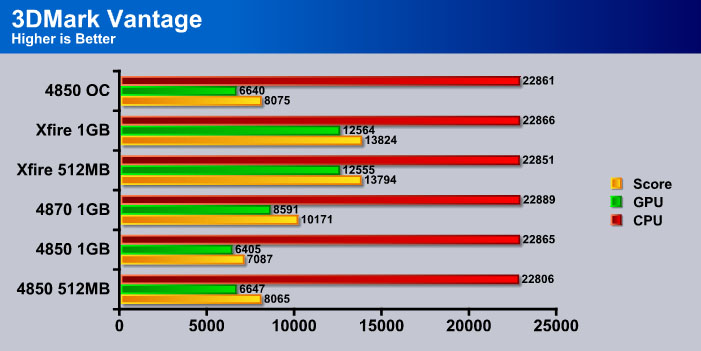
When the HD 4850 1GB is overclocked, it manages to slightly pass the HD 4850 512MB. I am still surprised that the 1GB card was not able to compete directly with the 512MB one card setup. Either way, the cards are pretty similar in score.
Conclusion
With 1GB graphics cards quickly becoming a standard, it will become harder and harder to justify purchasing an older 512MB unless you are going for a Crossfire system. Newer games are slowly coming around to taking advantage of added RAM. Judging by past experience, in the next year you will see a larger increase in frame rates from what you are seeing now. This will be even more prevalent in higher resolutions.
The performance of Crossfire is undeniable compared to a single HD 4870. If you are in the market for a graphics upgrade, but can’t justify the price of two HD 4870’s, then two HD 4850’s would be a better buy over a single HD 4870. If you fall into that position, it may be better to grab a couple 512MB cards due to their cheaper price. You may loose an advantage later on down the road, but their sheer power will keep them in a high standing compared to other 1GB cards.
Even after all of this time since the HD 4850 was introduced, it still proves to be a powerful card, capable of playing all of the latest games. Combine that with the added benefit of 1GB of RAM, and HIS’s incredible cooler, and you have a incredible combination of power that will live long into the future. The HIS HD 4850 1GB adds many advances to the HD 4850, allowing it to function far into the future as a viable graphics solution.
Pros:
+ Good performance
+ Cool operation
+ 1GB of RAM
+ Game included
Cons:
– Big price difference between 1GB and 512MB models
With a final score of 9 out of 10 the HIS HD 4850 IceQ4 receives the Bjorn3D Golden Bear Award.

 Bjorn3D.com Bjorn3d.com – Satisfying Your Daily Tech Cravings Since 1996
Bjorn3D.com Bjorn3d.com – Satisfying Your Daily Tech Cravings Since 1996
